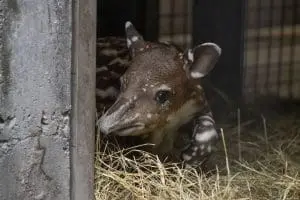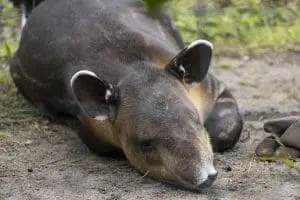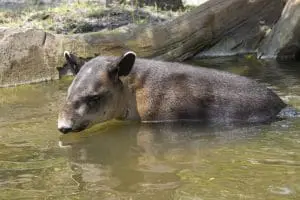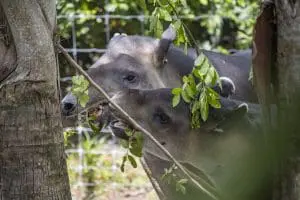
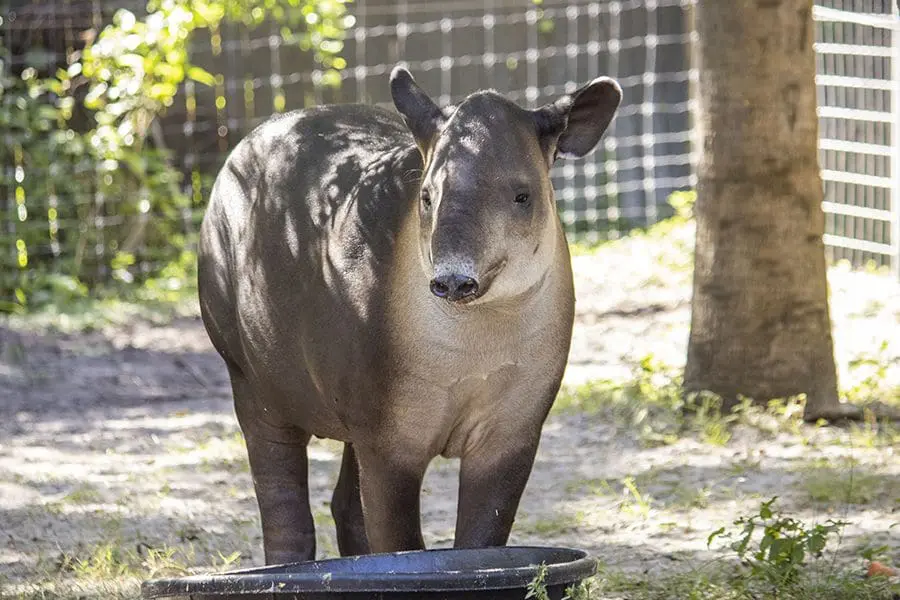
We will miss you, Theo!
You may remember him as a “baby watermelon,” but Theo the Baird’s tapir has certainly grown into his own! Now more than a year old and over 400 pounds, Theo is ready to embark on a journey to a new home. Under a recommendation from the Association of Zoos and Aquariums’ Species Survival Plan, the young tapir will soon be heading to a fellow AZA-accredited zoo.
As part of the plan, Theo will be paired with a female in the future in hopes of growing the population of this endangered species. In preparation for his big move, his animal care team has been working with Theo on crate training. By getting him used to the space in which he will be transported, we can make his journey as comfortable and stress-free as possible.
After his departure, we plan to reintroduce Theo’s parents, 4-year-old female Mia and 6-year-old male Antonio. Why you should be excited about this: That means a baby tapir could be on the way in the near future!
Mia and Antonio, along with our older female tapir Josie, will continue to rotate through their multiple habitats in Rainforest Revealed and Wild Florida.
This move is bittersweet for us here at the Zoo. While we will miss Theo dearly, we are excited that he is moving to a great new home and is playing an important role in the future of his species.
“What will I miss most about Theo? Everything!” said Rainforest Revealed keeper Albert Ferraro. “Theo was one of the most rewarding experiences of my career.
“It was such an exciting time not only watching him grow up, but also seeing how great of a mom Mia became. I remember the first time he stepped on a small scale for a voluntary weight and when he learned how to swim. I felt so proud! Theo has developed such a gentle and calm personality; I just know the keepers at his new Zoo will fall in love with him.”
Baird’s tapirs are endangered due to habitat loss and human hunting. This species is known for appearing watermelon-like as young thanks to their unique pattern. In their natural habitat, this design helps a little one camouflage in the filtered sunlight of the forest. The stripes eventually fade as tapirs grow older and resemble the coloring of their adult counterparts.
Brevard Zoo is an independent, not-for-profit organization that receives no recurring government funding for our operating costs. Your generous support enables us to continue to serve our community and continue our vital animal wellness, education and conservation programs.

